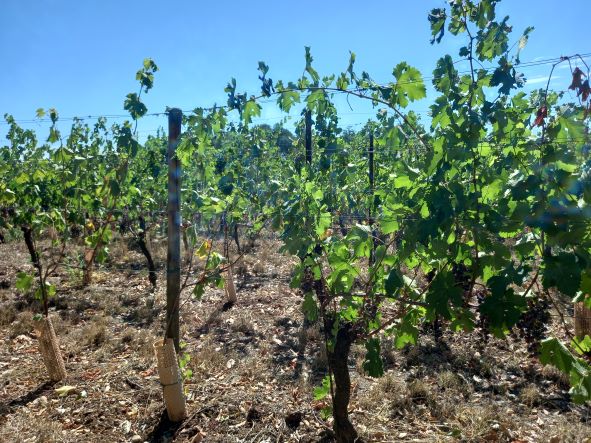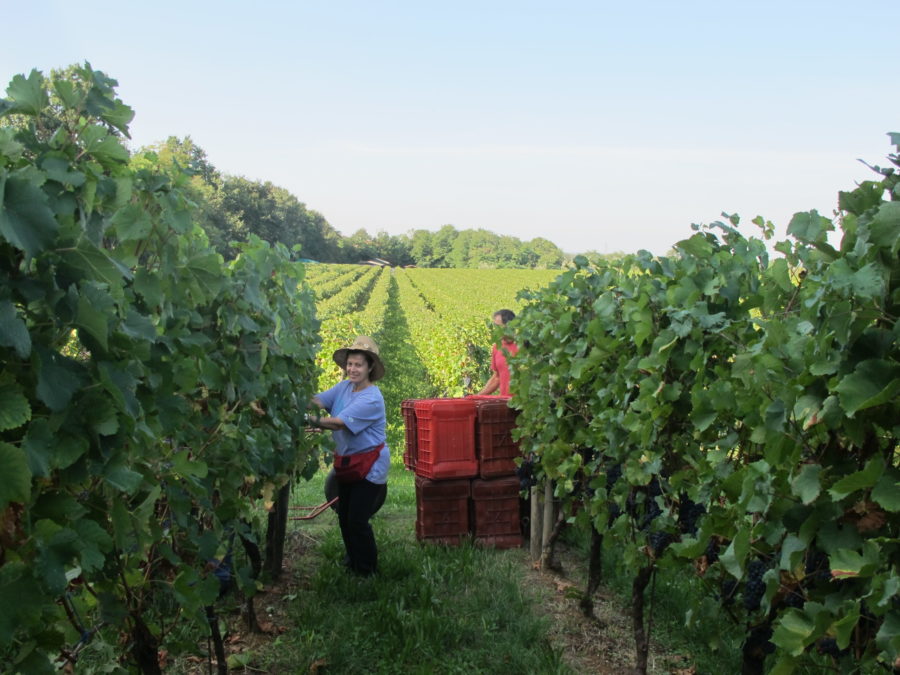

Random considerations regarding drought
posted on 9 September 2022Drought, increasingly frequent now, is one of the signs of climate change in action, but for those who live in Europe, our current 2022 constitutes a true, and significant, turning point. It’s no longer a matter of numbers, statistics, appeals from environmentalists and scientists: each one of us, throughout this dry year, has wondered at one point, Have I ever seen this river so dry? So little snow on that mountain? So few leaves in the forest in mid-summer? So little water in that spring? Most of us are thinking of the supply of our drinking water, of water for irrigating our gardens, for taking showers, but most fail to realise the significance of such a lack of water for producing electricity, running the factories, and—closest to home for us—for making agriculture possible. Water impacts our every daily activity: washing, cooking, cooling, building, manufacturing, and transporting goods… And that’s the reason that fresh water should be better appreciated and handled with more respect: even when it appears “to be doing nothing,” its mere presence in our sub-surface aquifers prevents salt water from intruding and from entering our riverbeds, and wreaking damage on agriculture and on the wells that supply our homes every day. My intent here is not to write a treatise on water and its roles, but I’d like to tell you about what happened here at Cantrina this hot summer.
When we don’t receive enough rain, the first result is a disparity in growth among the grapevines themselves. The older vines, now fully mature, have a more-developed root apparatus, which has already penetrated deep in search of water and minerals and is better suited to cope with adverse environmental conditions, while the younger vines suffer, growing too little and often not enough to even survive. Our vineyards, planted in 1991, 1997, and 2007, are therefore in full production, but they contain, on average, a third of vines that are planted over time to replace those that die from disease or other causes. Further, the morainic origin of the hills in the Valtènesi area give rise to situations where there are notable differences in the soils within each vineyard, and even within each single vine-row. Since we do not use irrigation and the rains were late in arriving, we had to practice cluster-thinning multiple times, sometimes even removing the entire crop from the hardest-hit vineyards just to help them survive, and even that extreme measure was not enough in some cases, unfortunately. And at harvest time, we will have to take a further step, throwing on the ground clusters damaged or not sufficiently developed. That translates into crop loss of over 30%, and even more in the white grapes and pinot noir, plus some 10% of our vines are now dead—just about all of those we planted as replacements over the last 2-3 years. Fortunately, more than half of our vineyards are planted in deep, fairly clayey soils, which allowed the vines to survive the most critical period and to ripen their clusters more or less normally. At the moment, we are forecasting a somewhat early harvest compared to recent years, and ripening is now progressing, following the blockage caused by the extreme heat. This could be a vintage of high alcohols, intense pigmentation, and moderate acidities, which would favour, in fact, well-structured reds over aromatic, crisp wines. In the midst of this trying growing year, it is emotionally striking, nevertheless, to see that the grapevines, in a countryside now semi-desert, relentlessly burnt over by the sun, are the only plants to remain green. For this, at least, we can be grateful to and for them.
At this point, our thoughts must turn to the future, and to the years in front of us. If it is true that we must in some way adapt to inexorably rising temperatures and to increasingly extreme weather, how, in fact, do we prepare? Over the last four years, we went from the hailstorms of 2019 and 2020 to the freeze of spring 2021 to this year’s drought, and we were forced to skip some vintages of certain wines or to drastically reduce already-slim production. Will we be able to continue to confront climate challenges with these same methods, or should we invest in radically changing our way of practicing viticulture? Possible solutions could be constructing a specialised irrigation well, or re-planting part of the vineyards with more weather-resistant varieties or rootstocks, or installing anti-hail nets, all measures very expensive not only in money but also in terms of impact on environmental sustainability. And finally, what impact would all this have on the value of the wines we produce?
And finally, what impact would all this have on the value of the wines we produce? We have no other choice, unfortunately. If we are determined to make wines of the highest possible quality, and therefore with no compromises, we will be forced to raise our prices. Cristina and Diego



